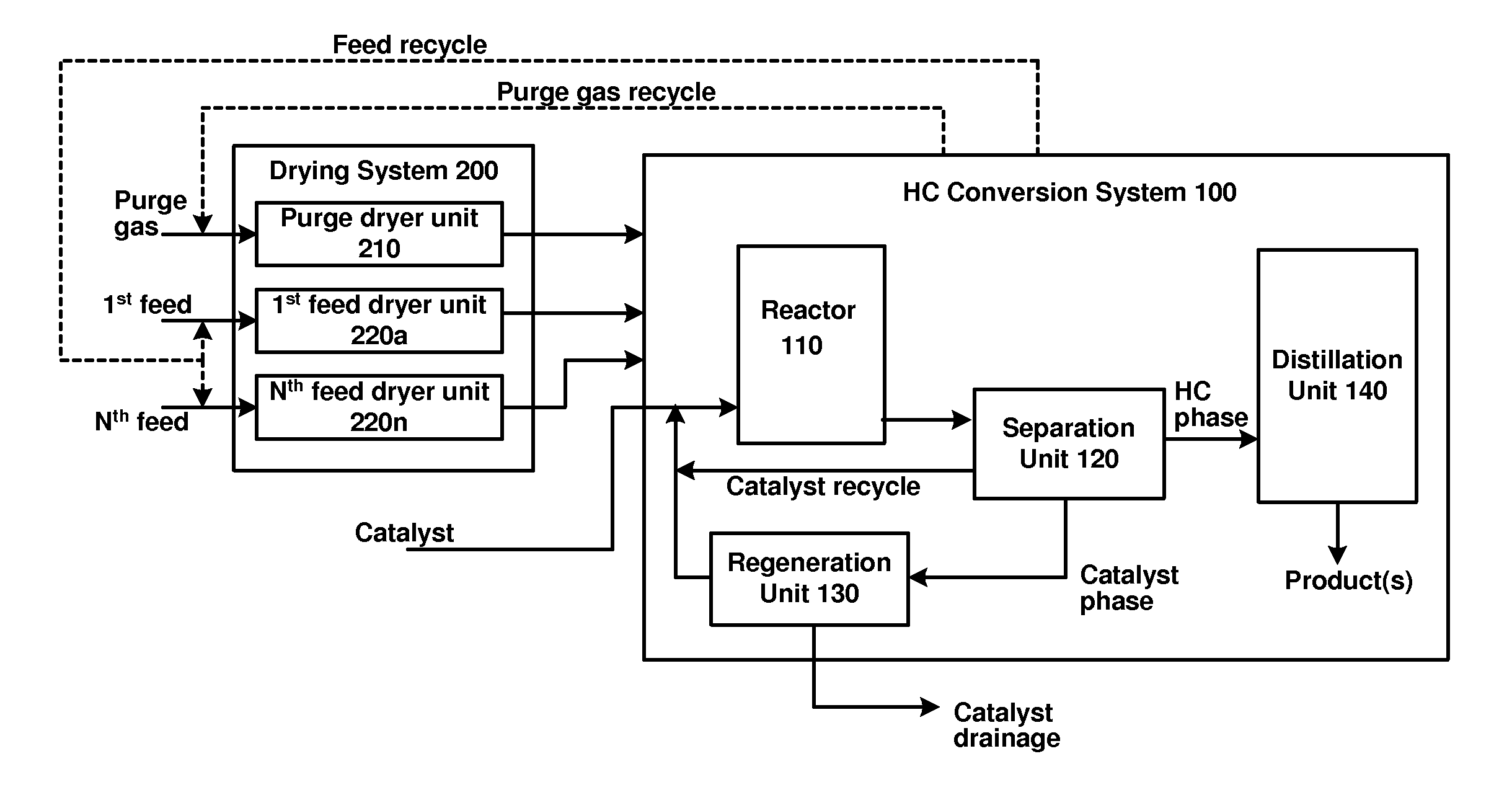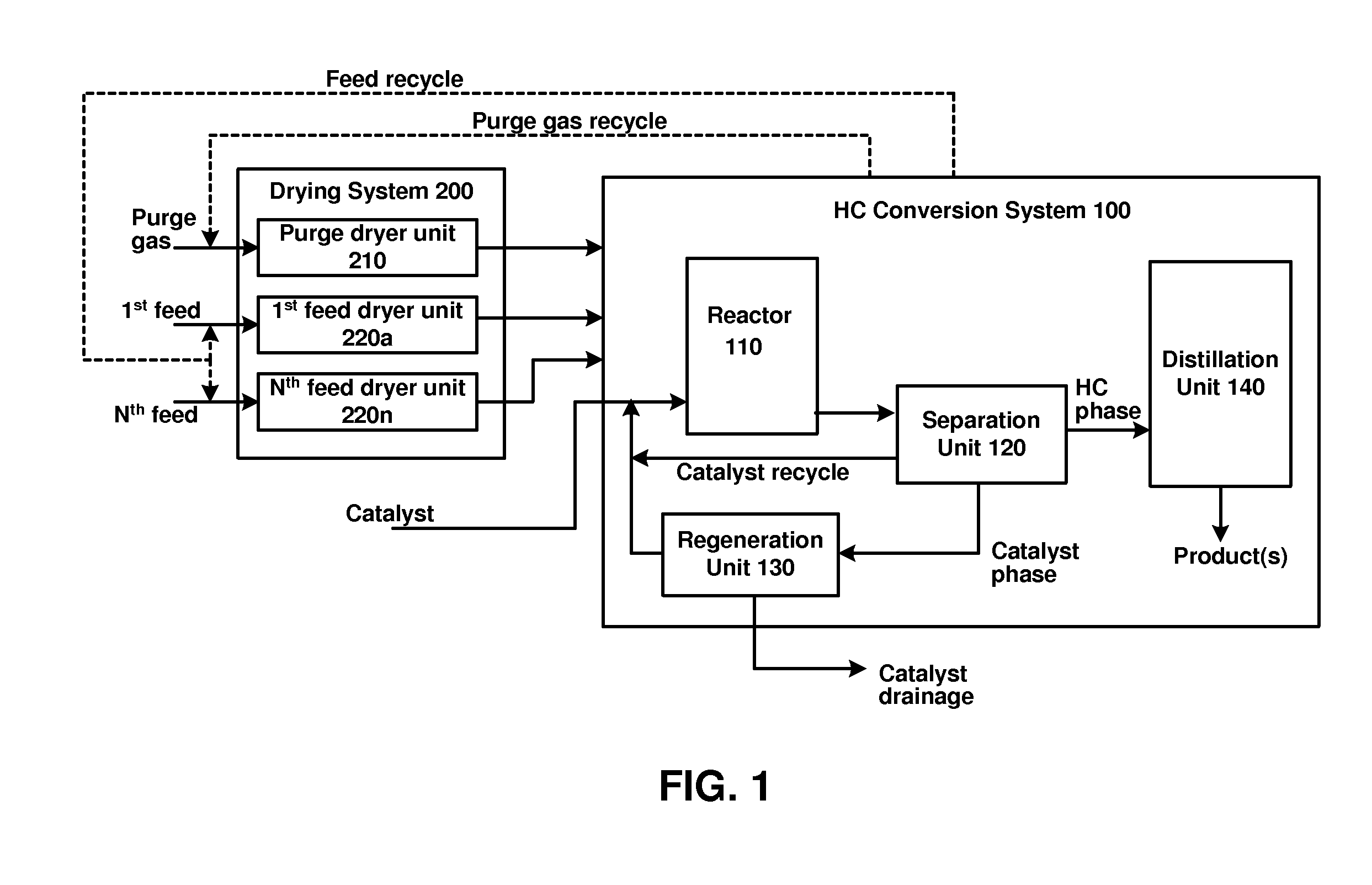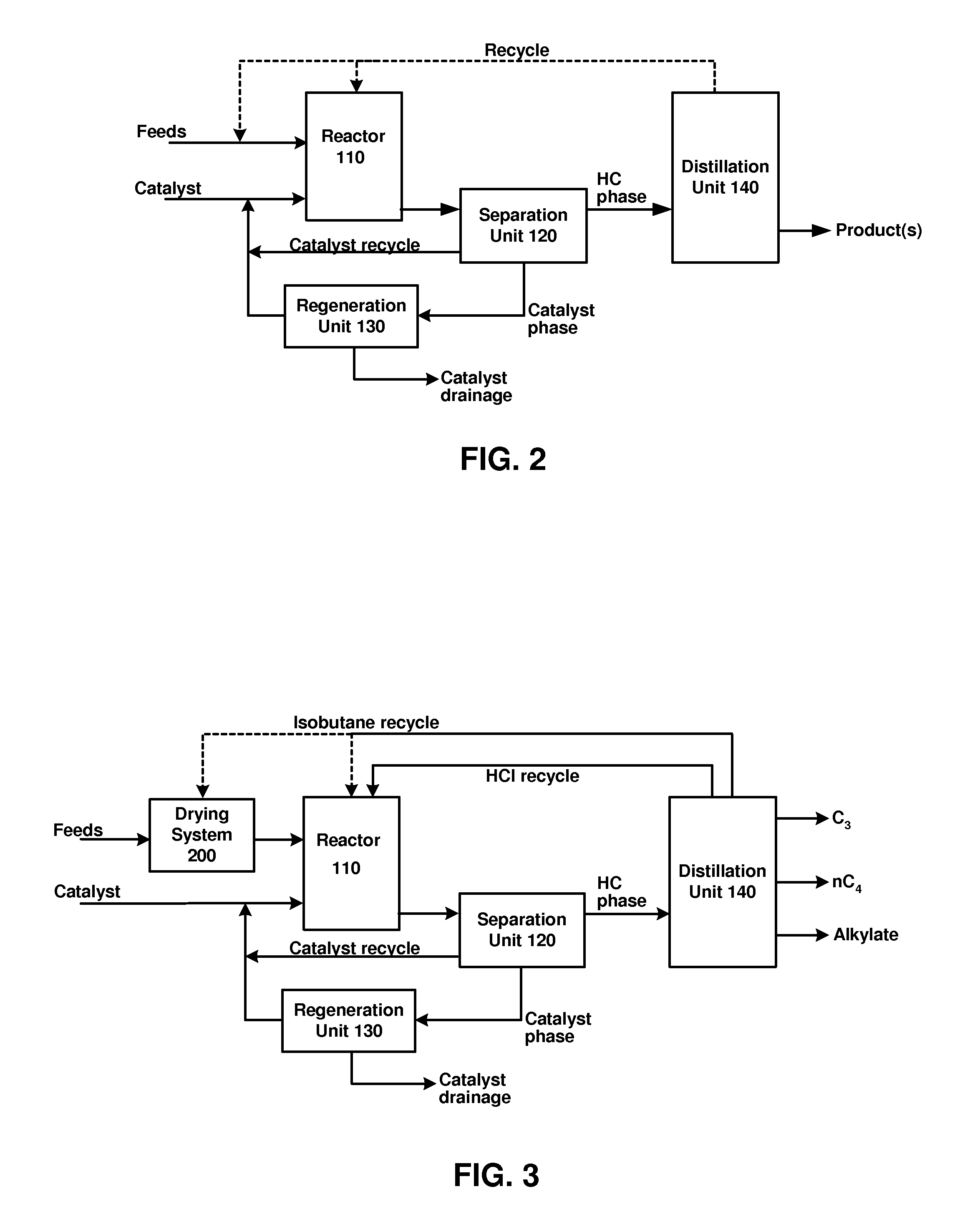Startup procedures for ionic liquid catalyzed hydrocarbon conversion processes
a technology of ionic liquid and hydrocarbon conversion, which is applied in the direction of hydrocarbon preparation catalysts, organic compounds/hydrides/coordination complexes, physical/chemical process catalysts, etc., can solve the problems of plant corrosion of distillation columns and other equipment, and achieve the effect of improving the performance of ionic liquid catalyzed hydrocarbon conversion processes, reducing equipment maintenance, and prolonging the life of equipment used
- Summary
- Abstract
- Description
- Claims
- Application Information
AI Technical Summary
Benefits of technology
Problems solved by technology
Method used
Image
Examples
example 1
Ionic Liquid Catalyst Comprising Anhydrous Metal Halide
[0086]Various ionic liquid catalysts made of metal halides such as AlCl3, AlBr3, GaCl3, GaBr3, InCl3, and InBr3 could be used for the catalytic processes. N-butylpyridinium heptachlorodialuminate (C5H5NC4H9Al2Cl7) ionic liquid catalyst is an example used in our process. The catalyst has the following composition.
Wt % Al12.4Wt % Cl56.5Wt % C24.6Wt % H3.2Wt % N3.3
example 2
Startup of a C3 and C4 Olefin / Isobutane Alkylation Process
[0087]Evaluation of C3 and C4 olefins alkylation with isobutane was performed in a continuously stirred tank reactor of an ionic liquid catalyzed alkylation system. In addition to the reactor, the system further included a gravity separator, a catalyst regeneration section, and a distillation section.
[0088]Before the start of the run, the system was dried with dry N2 purge gas to remove any trapped air and free water. A first dryer vessel and a second dryer vessel, each charged with 13X molecular sieve dryerant, were used to dry the isobutane feed (both fresh and recycle isobutane), and the olefin feed, respectively. A third dryer vessel charged with 3A molecular sieve was used to dry t-butyl chloride catalyst promoter. The molecular sieve dryerants in each of the dryer vessels were previously activated with 5 v / v / min dry N2 gas flow at 600° F. for 12 hours.
[0089]Then the dry isobutane feed was introduced to the reactor secti...
example 3
Shutdown and Re-Start Procedure for Ionic Liquid Catalyzed C3 and C4 Olefin / Isobutane Alkylation
[0096]First, the olefin feed injection was stopped. Then the circulation of the ionic liquid catalyst and butyl chloride promoter was stopped. Thereafter, isobutane flow was continued for several hours to flush any reactive olefins from the reactor section, after which time the isobutane flow was turned off. The heaters for the distillation columns were also turned off.
[0097]Once the process has been safely “parked” according to the above procedure, any required service or maintenance of the system may be performed. When the service or maintenance has been completed, the process may be put back on stream, e.g., using the startup procedure of Example 2. If the shutdown is limited to only a portion of the system, a simpler startup procedure may be used and some of the steps described in Example 2 may be omitted, as appropriate.
PUM
| Property | Measurement | Unit |
|---|---|---|
| threshold value | aaaaa | aaaaa |
| threshold residual water content | aaaaa | aaaaa |
| threshold level | aaaaa | aaaaa |
Abstract
Description
Claims
Application Information
 Login to View More
Login to View More - R&D
- Intellectual Property
- Life Sciences
- Materials
- Tech Scout
- Unparalleled Data Quality
- Higher Quality Content
- 60% Fewer Hallucinations
Browse by: Latest US Patents, China's latest patents, Technical Efficacy Thesaurus, Application Domain, Technology Topic, Popular Technical Reports.
© 2025 PatSnap. All rights reserved.Legal|Privacy policy|Modern Slavery Act Transparency Statement|Sitemap|About US| Contact US: help@patsnap.com



